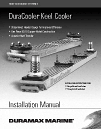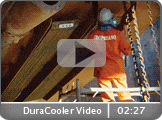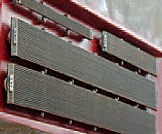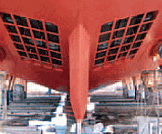DuraCooler Keel Cooler's design increases heat transfer more than 17%.
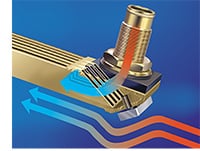
Duramax DuraCooler Patented Streamlined Header Design
Our streamlined header greatly enhance interior coolant and exterior seawater flow patterns while reducing system pressure drop within the keel cooler unit. We compared the heat transfer of the traditional square header design to the increased efficiency of the Duracooler streamlined header.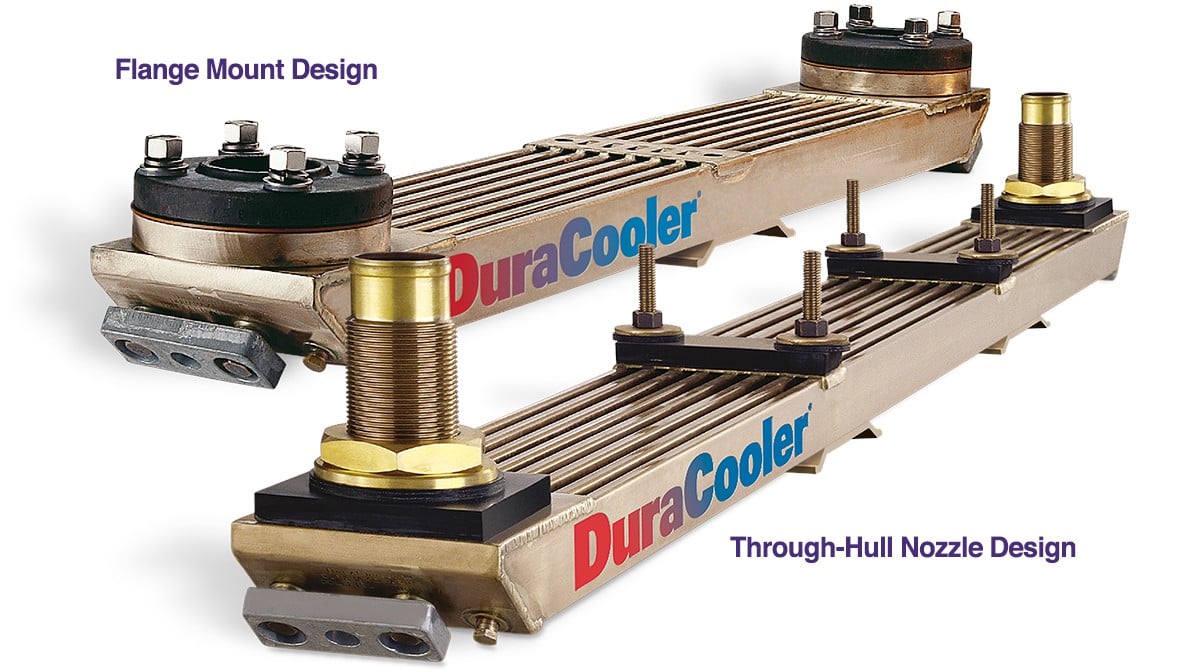
PATENTS PENDING
Latest engineered enhancement to DuraCooler design.
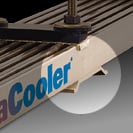
Engineered Flow Diverter "Scoops" feature added to every tube assembly
A series of engineered flow diverter "scoops" are added along the width of the bottom edge of tube assembly creating a diversion of the seawater that "flushes" the stagnated areas between the tubes forcing convection between hot tubes and the lower temperature seawater. The diverter is a unique design which must have a specified spacing between the diverter and tubes.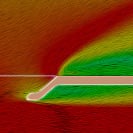 Graphic of diverter
"Scooping" action.
The diverter was developed using state of the art Computational Fluid Dynamic (CFD) modeling techniques then tested and validated utilizing a full scale water tunnel.
Graphic of diverter
"Scooping" action.
The diverter was developed using state of the art Computational Fluid Dynamic (CFD) modeling techniques then tested and validated utilizing a full scale water tunnel. The diverters are engineered to ensure a "scooping" action far enough away from any stagnant regions to allow forced convection between the hot tubes and the lower temperature seawater.
Streamlined header improves coolant flow distribution by 35% and heat rejection by 45% in outer tubes.
Coolant flow distribution to the outside tubes increased 35%
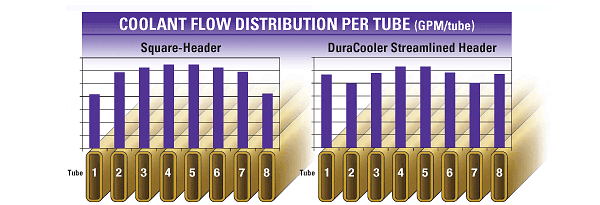
Heat rejection in the outer tubes increased 45%
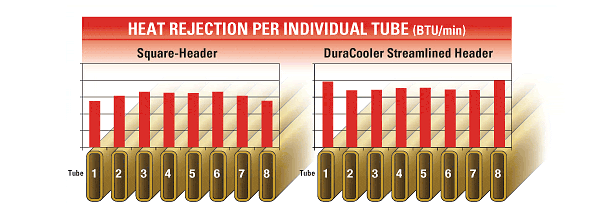
DuraCooler is custom-engineered to fit your exact needs.

Through-Hull Nozzle Design
Nozzle size and diameter manufactured for specific application. Two piece header design allows for braising on inside and outside of the header which, in turn, increases the integrity and reduces the chance of leakage. Sea chest or cofferdam is required by A.B.S.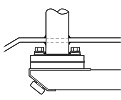
Flange-Mount Design
This is for non-through-hull applications. Hardware is located outside the hull for easy access. It is recommended when space inside the hull is tight or equipment makes through-hull inaccessible. No cofferdam or sea chest is needed.DuraCooler design reduces installation and maintenance costs.
Smaller footprint reduces costs
DuraCooler Streamlined design with increased coolant flow to the outside tubes, can reduce the footprint of some units by as much as 42%. DuraCooler units can be easily retrofitted to cool auxiliary engines and other heat sources at a lower cost.
One piece, high-strength 90/10 cupronickel construction
DuraCooler one piece construction is compact, making it easy to install. It's built for long life and low maintenance, with high-strength 90/10 cupronickel tubing that has excellent anti-fouling and heat transfer properties. It also resists water-flow erosion.
Custom Engineered to fit your exact needs
Your DuraCooler is custom-sized and manufactured to meet your engine specifications, installation space, internal plumbing configurations and operational requirements.
In 1997, Duramax Marine initiated a research and development program to identify opportunities to improve the operational efficiency of the square-headed outboard keel cooler.
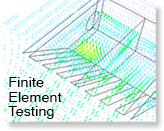 Finite element computer studies were conducted to determine internal and external flow patterns, pressure drop and heat transfer characteristics for different heat exchanger geometries.
Finite element computer studies were conducted to determine internal and external flow patterns, pressure drop and heat transfer characteristics for different heat exchanger geometries.
The traditional square header design system was tested for inefficiencies.
Computer modeling showed poor coolant flow through tubes 1 & 8. It indicated the outside tubes were being used least efficiently even though these tubes had the greatest potential heat rejection per linear foot. Inefficiencies were attributed to the geometric square head design.
Duramax Marine began to develop a more efficient streamlined header design.
It needed to enhance interior and exterior flow patterns and, at the same time, reduce the overall pressure drop within the keel cooler unit. Resulting in a more efficient unit with a smaller footprint.
The DuraCooler streamline header design was tested.
The tests conducted on the streamlined header design showed an increase of coolant flow of 35% in the outside tubes, along with an increase of heat transfer in the outside tubes by 45%.


